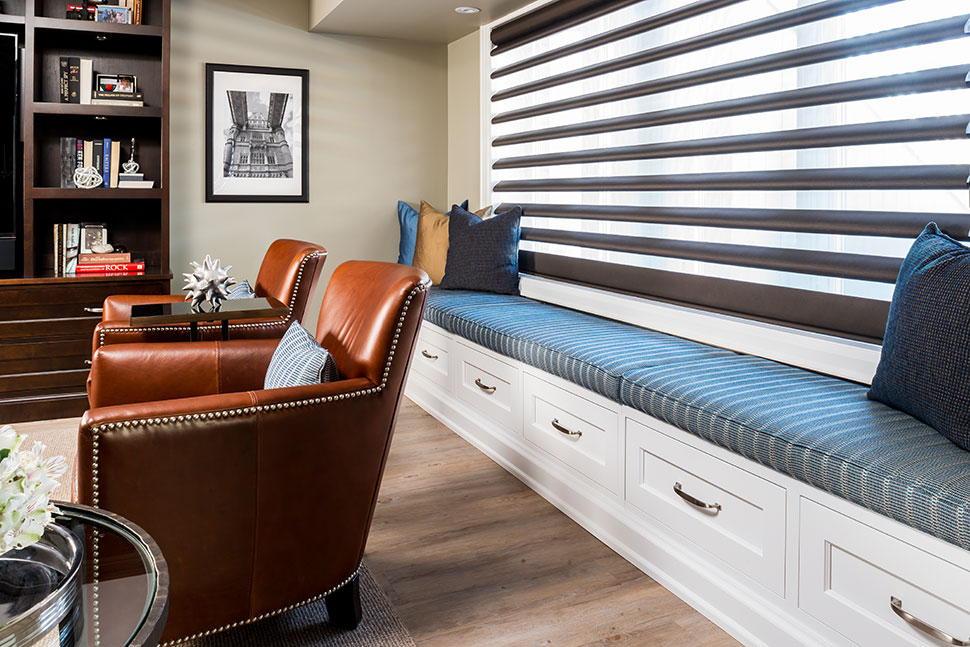Window treatments go far beyond style, they have a job to do as well. A good window treatment will compliment your space without looking like they are working too hard. This can be achieved by first determining what functions you would like your window coverings to perform.

A window covering is seldom just for show. Most people are looking for privacy, light control, or to manage temperature. Once your need is determined, it is much easier to select the best type for your room. There are two types of window treatments, operable and fixed. Operable means that you are able to operate the treatment and fixed means they are non-moving.
Once you assess your needs, it is time to choose your style. Layering is a fabulous option for both style and purpose. Many people will select blinds as they offer many solutions and then add fixed drapery panels for decoration. Layering of window coverings is the best way to complete a window as it adds function and a personal feel. These are all important factors for your home.
Blinds can be a great alternative, because they perform a function, but also come in so many different styles and colours. Blinds can be rolled away completely or tilted to allow some lighting. If you don’t like the vertical strip, so synonymous of blinds, and don’t want it to dominate your design, there are other options as well. If you are looking for warmth, look for a horizontal slat like a wood or a fabric version called silhouette by Hunter Douglas, which means they are all fabric and all sewn together.
Most of the fabric is sheer except for one strip, which operates as the slat would on traditional blinds. Other options include solar screens if you are looking to control the UV, or roller blinds for minimal light penetration. A roman blind is another great option to add definition to window treatments. This option can be suspended completely, covering the entire window or a portion of the window. Roman blinds can also be completely pulled up, creating a decorative ruching effect at the top of the window.
When you are shopping for window treatments, it is important to know the difference between a shutter and a blind. Shutters cover the whole window and can be considered an all-in-one window covering so no additional drapery will be required. Shutters will reduce the amount of light generally entering a space. A blind is lighter and can be rolled away to show an open window but can be more delicate in moist areas.
Another point to consider is that condos have completely different needs in terms of window treatments versus a single-family home. In a condo, blinds are important for managing solar heat. In addition, they also can be used for helping to maintain the interior focus within the space. Views are great, but can be distracting especially at night when windows can act like a big black mirror.
If darkness for sleeping is a concern of yours, add blinds for daytime light and privacy management and drapes for night time as these black out light the best.
No matter the room, when window treatments are done right, they will let you inject your own personality into the home while managing light, heat and privacy.

